Kootenai River Islands look so brown?
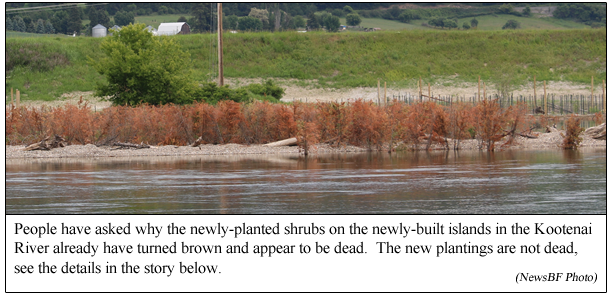
by the Fish and Wildlife Department
Kootenai Tribe of Idaho
Why do the plants on the newly constructed islands in front of the Kootenai River Inn look like they are already dead? The answer is that the new plantings aren’t dead at all, but they are hiding behind bundles of dead branches and brush. What you’re seeing is new way of protecting the plantings on the islands from being eaten by our Bonners Ferry area wildlife.
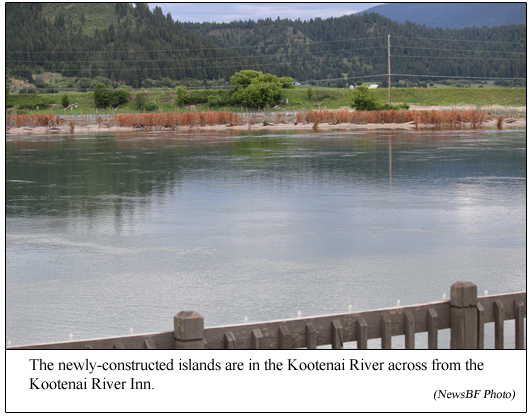
Last summer the Kootenai Tribe of Idaho constructed the first half of a two-year project to help endangered Kootenai River white sturgeon, burbot and other native fish. The Bonners Ferry Islands project includes excavation of pools, construction of structures to protect the river bank and provide fish habitat, bank restoration, construction of two islands and revegetation of the islands and river banks.
The 2015 vegetation work included planting seeds, native trees, shrubs, and live willow cuttings on the islands and north river bank across from the Kootenai River Inn. Once these plants take hold they will help to stabilize the islands and river banks. The plants also play an important role in helping sturgeon, burbot and other fish by improving the food web in the river. When insects and debris from the plants drop into the river they help provide nutrients and food for fish.
So, back to those brown dead plants on the islands. The Kootenai Tribe is trying out a new way to protect the freshly planted vegetation from being eaten by deer, beaver, geese and other wildlife. Last summer the Tribe’s contractors wrapped the new plantings in bundles of already dead branches and brush to protect them from browsing by wildlife while the plants get big enough to survive on their own
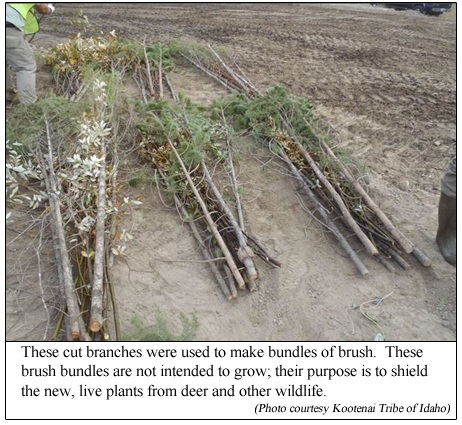
These protective brush bundles were designed to create conditions similar to what you would find on a natural, densely vegetated island or riparian area.
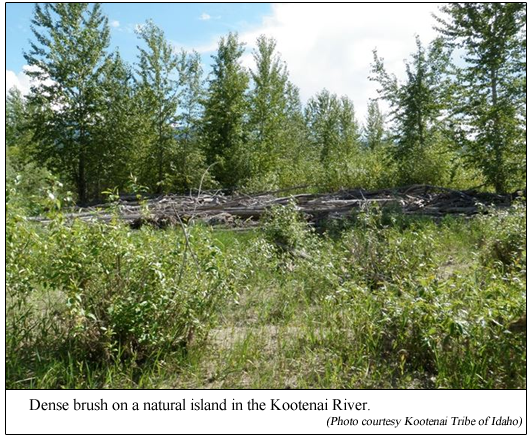
Because the newly-constructed islands were completely bare when it was time to put plants on them, the bundles were needed to give the new plantings some protection. The brown, dead plants we are seeing on the islands and river bank are not the new vegetation planted on the islands—they are the outer bundles of protective brush.
Many of the branches used to make these protective bundles came from conifer trees that had green needles when they were put in place. While the needles of those branches stayed green through most of the winter, they have now turned brown. The conifer needles will drop to the ground soon helping to build new soil on the islands.
The new living trees and shrubs are growing within the protected areas created by the bare limbs and brown branches of the protective bundles.
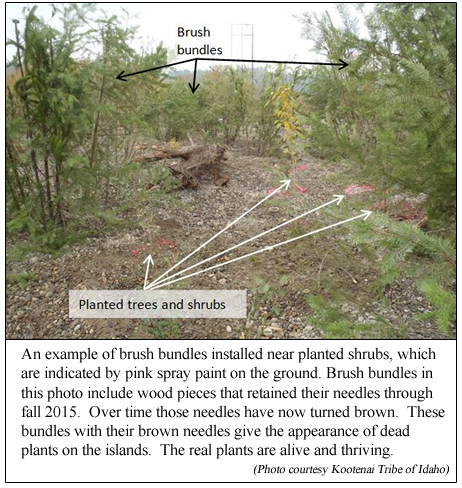
These plants will continue to grow and mature, and should fill in the spaces between the brush bundles and over time grow taller than the brush. Eventually the brush will decompose leaving just the living plants.
If you look closely now, you’ll see the green leaves of the planted native trees and shrubs are beginning to show through the brush. More and more green will become visible on the islands as summer comes and the river flows subside.
Now that the Kootenai River stage is high, plants on the islands are partly under water. Fortunately, these plants are native riparian species and they are adapted to being under water or partially submerged for several days or even weeks during the growing season.
Some of the willow species, such as sandbar willow, are planted at lower elevations on the islands and these willows commonly survive up to six weeks under water during spring and early summer. Other shrubs such as alder and dogwood were planted slightly higher, but these plants can also survive days or weeks under water. Plants like chokecherry and rose are less tolerant of being submerged for long periods and these were concentrated on the highest parts of the islands. The current high water is giving last year's planting a much-needed watering, and once the water recedes, green leaves and new growth will be visible as the new vegetation starts to establish on the islands.
The Kootenai Tribe’s contractors will be out monitoring the vegetation this summer to see how well this approach is working and make adjustments if needed.
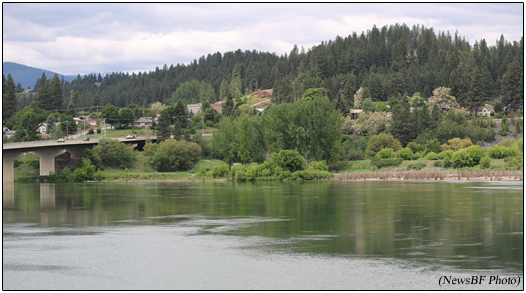
The Tribe will begin construction of the second part of the Bonners Ferry Islands project later this summer. Stay tuned for more news about this project.
The Bonners Ferry Islands project is part of a larger Kootenai Tribe of Idaho program, the Kootenai River Habitat Restoration Program, which is funded by the Bonneville Power Administration.
Additional information and progress updates are available on the Kootenai Tribe’s website: www.restoringthekootenai.org.